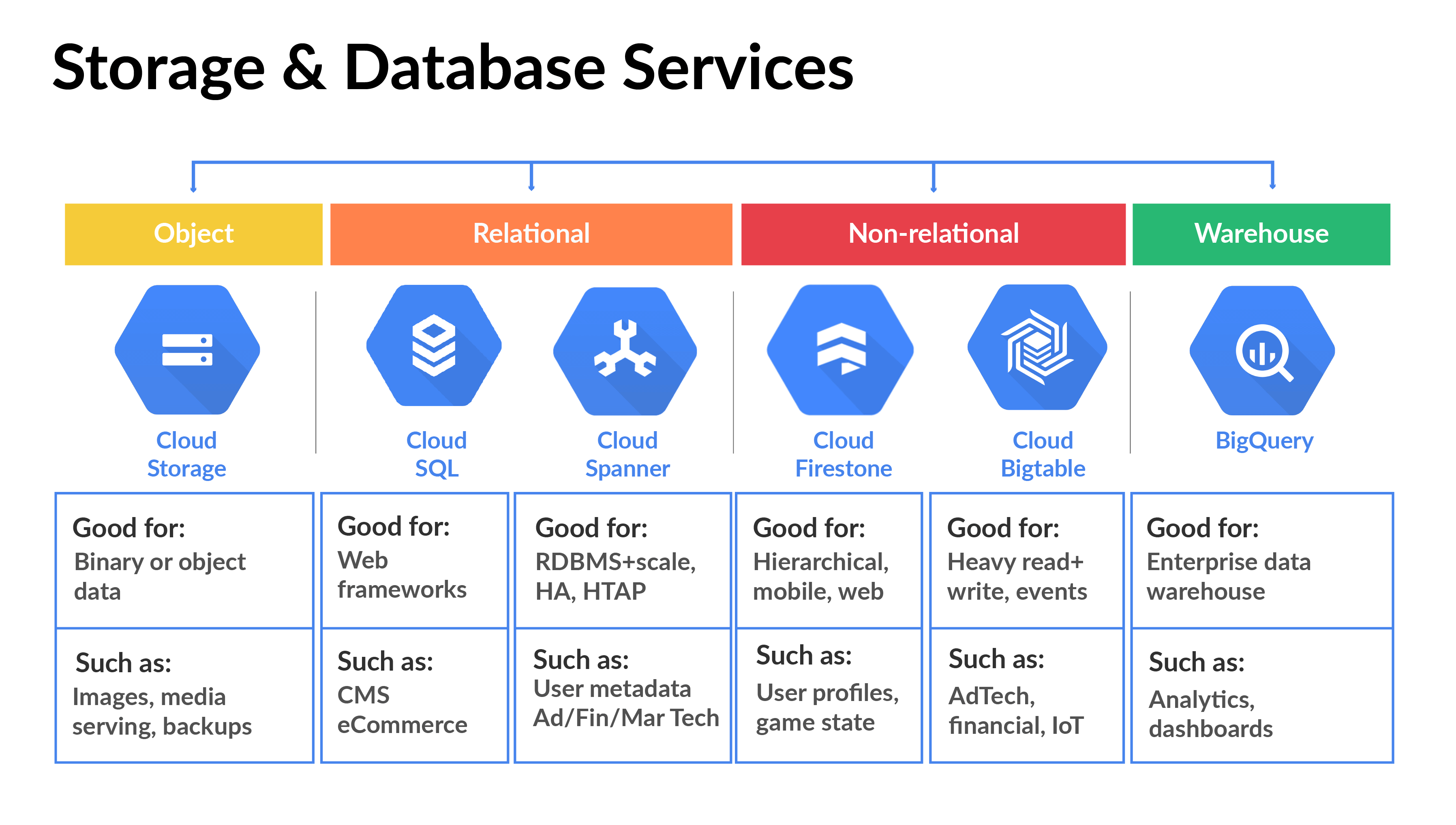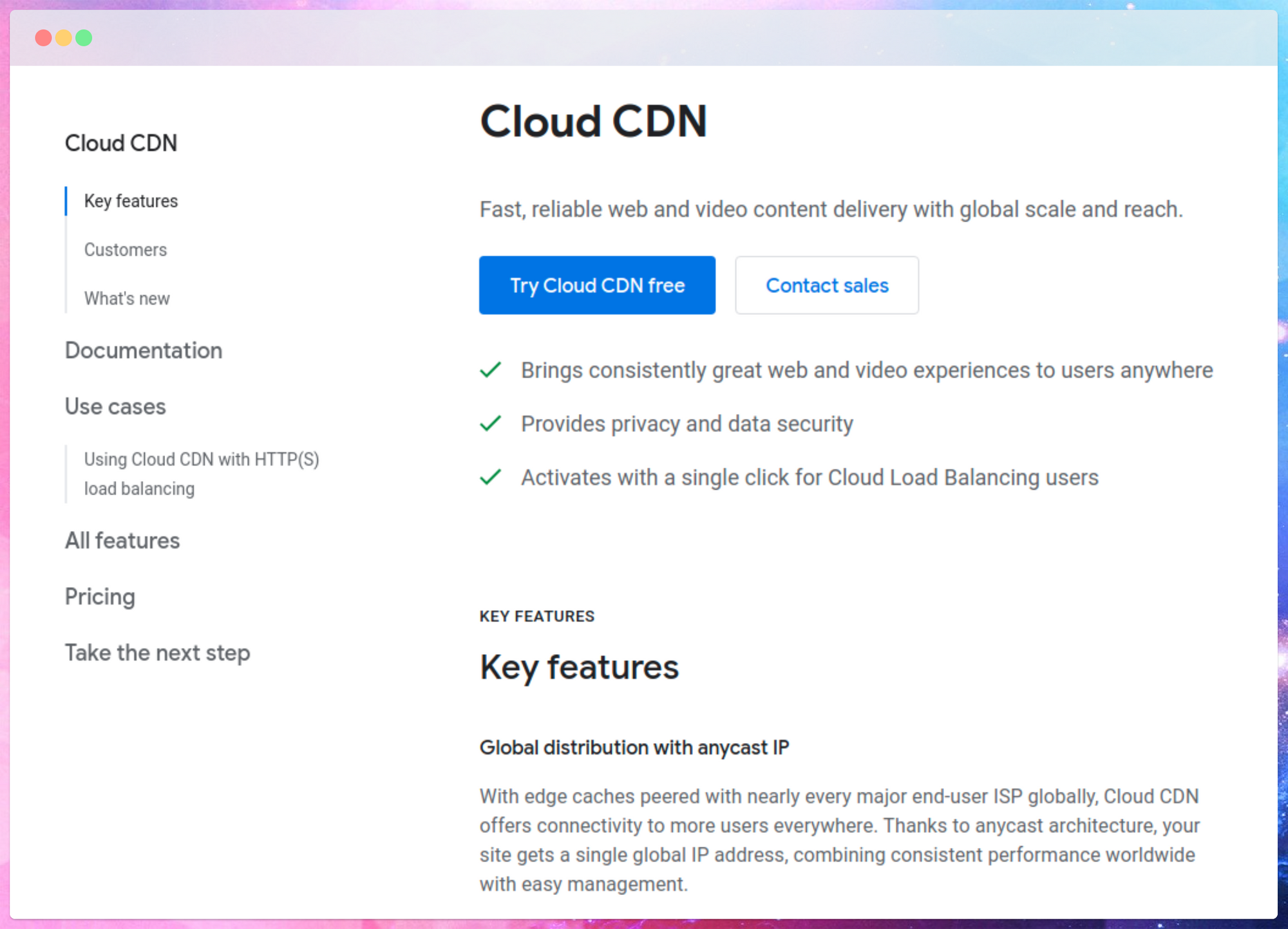Google Cloud CDN: Empowering High-Performance Delivery of Content

Overview

Google Cloud Content Delivery Network (CDN) is a global network of edge nodes that accelerates the delivery of content to end users, significantly improving website and application performance.

Benefits of Google Cloud CDN
- Reduced latency: Content is cached on edge nodes closer to end users, minimizing distance and latency.
- Increased throughput: By distributing content across multiple edge locations, CDN reduces load on origin servers and improves overall capacity.
- Security enhancements: CDN provides built-in DDoS protection, encryption, and TLS support to protect content and user data.
- Cost optimization: CDN can reduce bandwidth costs by caching frequently accessed content on edge nodes.
Integration with Google Services
Google Cloud CDN seamlessly integrates with other Google services, enabling comprehensive performance optimization:
- Cloud Storage: CDN accelerates delivery of static content, such as images, videos, and documents, hosted on Cloud Storage.
- Cloud Functions: CDN can cache the results of Cloud Functions, reducing latency for serverless applications.
- App Engine: CDN can improve the performance of App Engine applications by caching static assets and serving them from edge nodes.
- G Suite: CDN can enhance the performance of G Suite applications, such as Gmail, Drive, and Calendar, by delivering content faster to users.
Features of Google Cloud CDN
- Global network: CDN has a global network of over 160 edge locations, ensuring content is served from the closest location to end users.
- Caching rules: Users can define caching rules to control the behavior of CDN, such as cache expiration and cache control headers.
- Security policies: CDN supports multiple security policies, including DDoS protection, TLS encryption, and IP whitelisting.
- Monitoring and analytics: CDN provides comprehensive monitoring and analytics tools to track performance and troubleshoot issues.
Use Cases
Google Cloud CDN is suitable for a wide range of use cases where performance is crucial, including:
- Websites: Improve load times and increase user engagement by caching web pages and static assets.
- Media streaming: Enhance video and audio streaming experiences by reducing latency and improving buffering.
- Mobile applications: Accelerate content delivery for mobile applications, ensuring a seamless user experience.
- E-commerce: Provide fast and reliable delivery of product images, descriptions, and checkout processes.
Conclusion
Google Cloud CDN is a powerful tool for enhancing the performance of content delivery across Google services. By leveraging its global network, caching capabilities, and security features, CDN enables organizations to deliver a superior user experience, improve website and application reliability, and optimize infrastructure costs.## Google Cloud CDN: Enhancing Performance Across Google Services
Executive Summary
Google Cloud CDN (Content Delivery Network) is a global network of edge servers that act as proxies between your content and end users, accelerating the delivery of web pages, images, videos, and other static and dynamic content. By leveraging Google Cloud CDN, you can improve page load times, reduce latency, and enhance the user experience for your website or application.
Introduction
In today’s fast-paced digital landscape, website performance is crucial for attracting and retaining users. Slow loading times can lead to increased bounce rates, lower conversion rates, and a diminished overall user experience. Google Cloud CDN is designed to address these challenges by providing a reliable and scalable solution for delivering content efficiently and quickly.
FAQs
Q: What is Google Cloud CDN?
A: Google Cloud CDN is a content delivery network that enables you to improve the performance of your website or application by caching static and dynamic content on edge servers located around the globe.
Q: How does Google Cloud CDN benefit my website or application?
A: By using Google Cloud CDN, you can:
- Reduce latency: By caching content closer to end users, Google Cloud CDN can significantly reduce the time it takes for content to reach them.
- Improve page load times: Faster loading times lead to a better user experience, which can improve engagement and conversion rates.
- Increase website availability: Google Cloud CDN’s global network of edge servers ensures high availability of your content, even during peak traffic periods or outages.
Q: Is Google Cloud CDN easy to use?
A: Yes, Google Cloud CDN is designed to be user-friendly and can be easily integrated with your website or application. It offers a variety of configuration options and supports multiple protocols and file formats.
Subtopics
1. CDN Edge Servers
- Description: CDN edge servers are distributed across the globe and act as local caches for your content.
- Key Points:
- Optimized locations: Edge servers are strategically located in regions with high user density to minimize latency.
- Caching capabilities: Edge servers can cache both static and dynamic content, reducing the load on your origin server.
- Automatic content routing: Google Cloud CDN automatically routes user requests to the closest edge server, ensuring fast delivery.
2. Global Network
- Description: Google Cloud CDN’s global network consists of multiple points of presence (PoPs) and edge servers distributed worldwide.
- Key Points:
- Extensive reach: PoPs are located in over 200 cities and regions, ensuring global coverage.
- Low latency: By placing edge servers closer to users, Google Cloud CDN minimizes the distance data needs to travel.
- Increased redundancy: The distributed network provides increased redundancy, reducing the risk of outages.
3. Caching Strategies
- Description: Google Cloud CDN offers a range of caching strategies to optimize content delivery based on your specific needs.
- Key Points:
- Default caching: Default settings use Google’s recommended caching algorithms to optimize performance for most content types.
- Custom caching: Allows you to define custom caching rules based on factors such as file type, URL, or user location.
- Cache headers: Control caching behavior using HTTP headers, allowing you to override default settings or specify additional caching instructions.
4. Content Security
- Description: Google Cloud CDN provides various security features to protect your content and ensure data integrity.
- Key Points:
- SSL/TLS encryption: Data is encrypted during transmission between edge servers and end users, ensuring secure content delivery.
- Access control lists: Restrict access to your content by specifying authorized users or IP addresses.
- DDoS protection: Google Cloud CDN’s built-in DDoS protection helps mitigate distributed denial-of-service attacks.
5. Performance Monitoring
- Description: Google Cloud CDN provides comprehensive performance monitoring tools to track and analyze content delivery performance.
- Key Points:
- Request logs: Detailed logs track every request to your CDN, providing valuable insights into traffic patterns and performance metrics.
- Performance dashboards: Real-time dashboards visualize key metrics such as latency, request rates, and cache hit ratios.
- Alerts and notifications: Customizable alerts can notify you of performance issues or potential threats.
Conclusion
Google Cloud CDN is a powerful and cost-effective solution for improving the performance and security of your website or application. By leveraging its global network, caching strategies, and robust security features, you can accelerate content delivery, reduce latency, and enhance the user experience. Google Cloud CDN is a valuable asset for any business looking to optimize their digital presence and deliver a seamless and engaging experience to their customers.
Keyword Tags
- Google Cloud CDN
- Content Delivery Network
- Website Performance
- Latency Reduction
- Global Network

